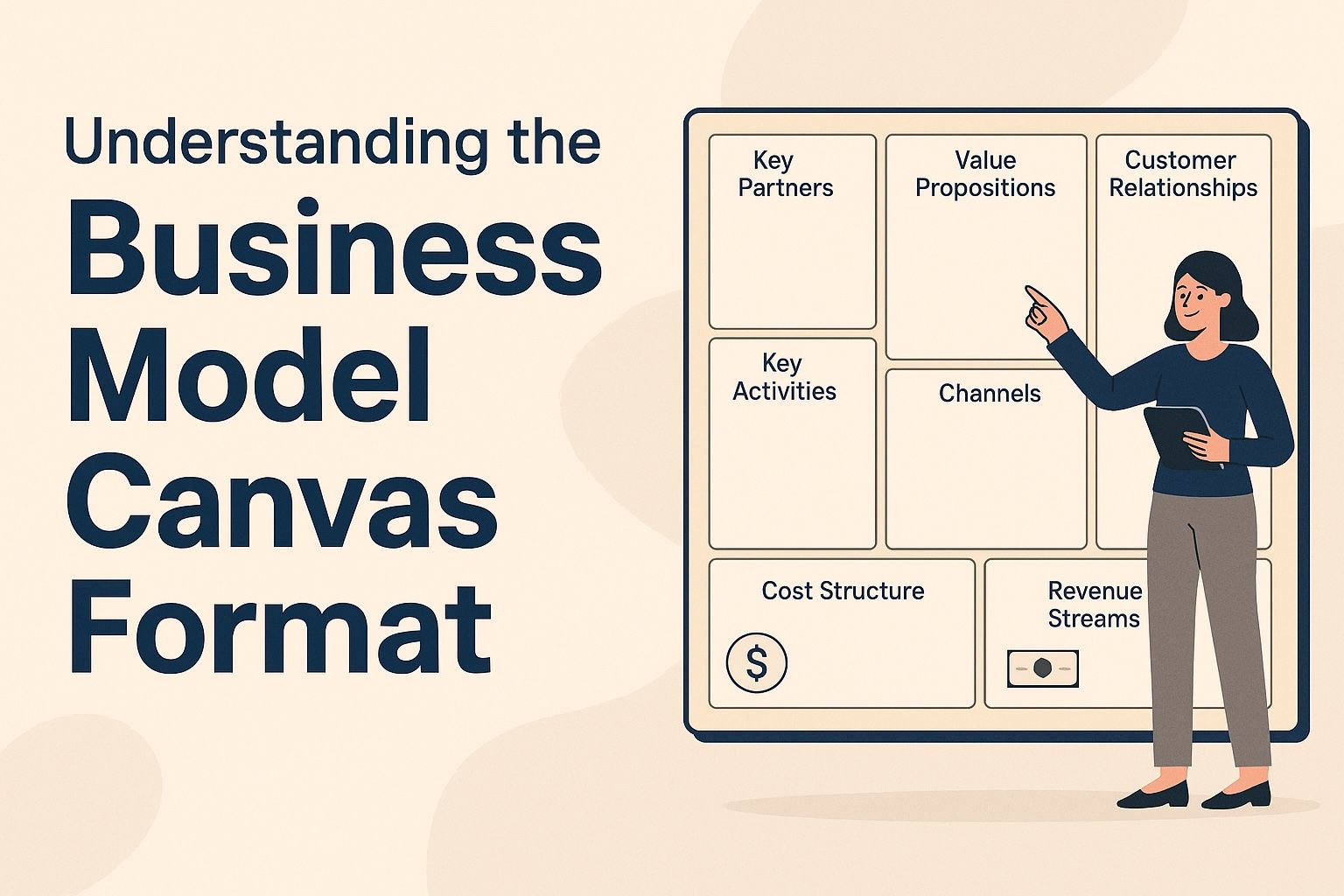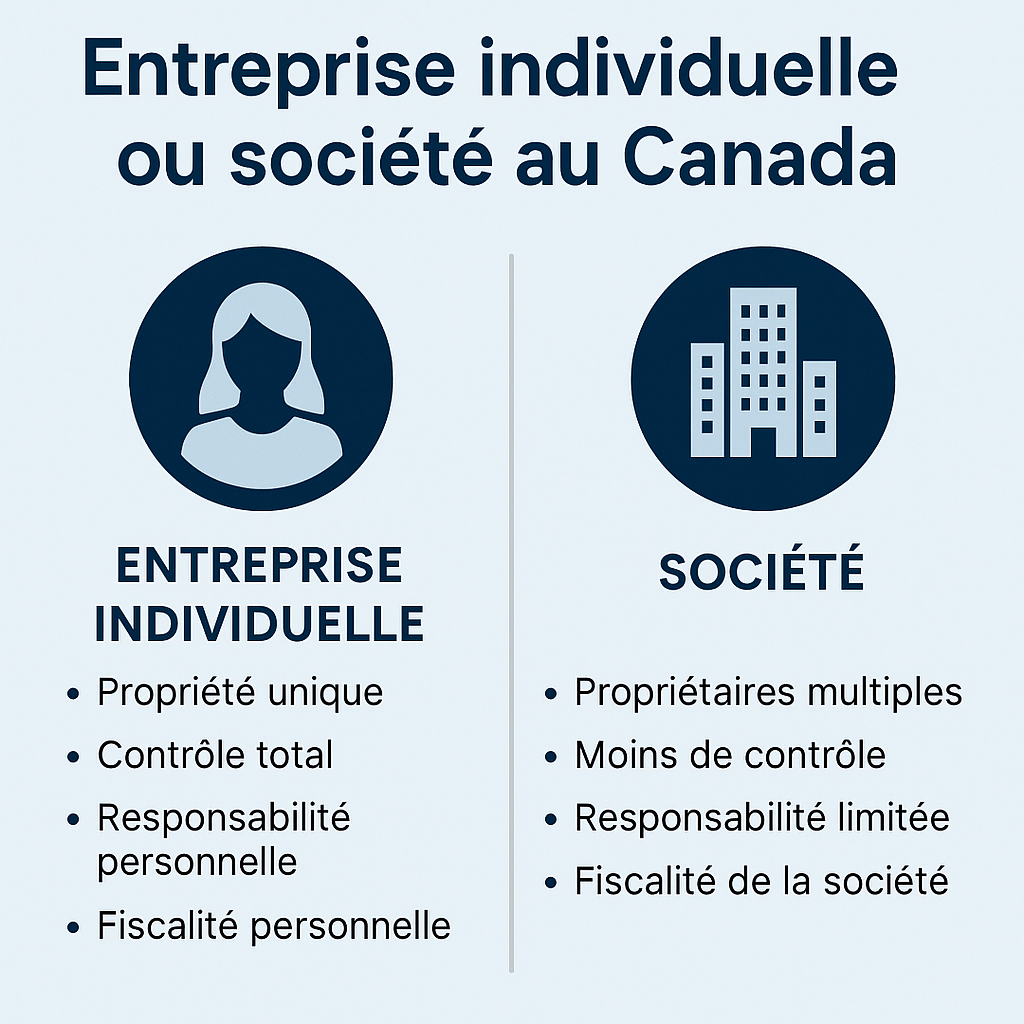Understanding the Business Model Canvas Format
The Business Model Canvas (BMC) is a strategic management tool that offers a comprehensive view of a business. It helps entrepreneurs and business leaders to visualize, describe, and assess business models. By providing a structured framework, the BMC facilitates the analysis and design of business models, allowing for innovative thinking and strategic alignment. In this article, we will dive into the components of the Business Model Canvas format and how it can be beneficial for your business.
The BMC not only aids in the visualization of a business model but also serves as a communication tool that bridges gaps between different departments within an organization. It simplifies complex business structures by breaking them down into more manageable sections, enabling teams to focus on specific areas without losing sight of the overall strategy. This holistic approach is critical in today's fast-paced and competitive business environment, where adaptability and foresight can determine success.
The Business Model Canvas is a simple, yet powerful tool designed to help businesses develop new or document existing business models. It provides a visual chart with elements describing a company's value proposition, infrastructure, customers, and finances. The BMC was developed by Alexander Osterwalder and Yves Pigneur and is widely used for its simplicity and efficiency. Its straightforward layout makes it accessible to various stakeholders, from seasoned executives to new team members.
The BMC's versatility is one of its strongest attributes. It can be applied across industries and sectors, serving as a universal language for business modeling. Whether a company is in its startup phase or undergoing a strategic pivot, the BMC offers insights that can drive decision-making and innovation. By using the BMC, businesses can quickly iterate on ideas, test assumptions, and adapt their models in response to market changes or internal challenges.
The Business Model Canvas consists of nine key components that provide a complete picture of how a business operates. Let's take a closer look at each one. Each block is interconnected, reflecting the dynamic nature of business activities and emphasizing the importance of an integrated approach to strategy development.
These nine building blocks collectively form the blueprint of a business model, allowing companies to visualize how value is created, delivered, and captured. By understanding each component, businesses can identify strengths, weaknesses, opportunities, and threats within their model, enabling them to make informed strategic decisions.
This block defines the different groups of people or organizations an enterprise aims to reach and serve. Identifying customer segments is crucial as it helps in tailoring products and services to meet their specific needs. By understanding who the customers are, companies can prioritize resources and efforts toward the most valuable segments.
Moreover, segmenting customers allows businesses to better understand the unique characteristics and behaviors of different groups. This insight can lead to more targeted marketing campaigns and product development strategies, ultimately increasing customer satisfaction and loyalty. In a world where personalization is key, accurately defining customer segments can provide a competitive advantage.
The value proposition is at the heart of the Business Model Canvas. It describes the bundle of products and services that create value for a specific customer segment. A strong value proposition is what differentiates a company from its competitors. It answers the fundamental question of why customers should choose one product over another.
Crafting a compelling value proposition involves understanding the problems that customers face and how a company's offerings solve these problems. It requires a deep knowledge of customer needs, preferences, and pain points. A well-defined value proposition not only attracts new customers but also strengthens relationships with existing ones, contributing to long-term business success.
Channels are the means through which a company delivers its value proposition to its customer segments. This includes all the touchpoints a business uses to communicate and reach its customers, from marketing to sales and distribution. Effective channels ensure that customers receive the intended value in a way that is convenient and accessible for them.
Selecting the right channels is crucial for maximizing reach and impact. Companies must consider the preferences of their customer segments and the nature of their products or services when deciding on channels. In today's digital age, businesses have a plethora of channels at their disposal, from traditional brick-and-mortar locations to online platforms and social media. The key is to create a seamless and integrated experience across all channels.
This block details the type of relationship a company establishes with its customer segments. It can range from personal assistance to automated services, and it helps in retaining customers and building loyalty. The nature of customer relationships can significantly impact customer satisfaction and brand perception.
Understanding and managing customer relationships is vital for long-term business success. Companies must decide on the level of interaction and engagement they wish to have with their customers. Whether through personalized support, self-service options, or community-building activities, fostering strong relationships can lead to increased customer retention and advocacy, ultimately driving growth.
Revenue streams represent the cash a company generates from each customer segment. Understanding revenue streams is crucial for determining how a business will sustain itself financially. Different revenue models can be explored, such as subscription fees, asset sales, licensing, and more.
Diversifying revenue streams can provide stability and reduce reliance on a single source of income. By exploring various avenues for generating revenue, businesses can mitigate risks associated with market fluctuations or changes in customer demand. Additionally, understanding the value that different customer segments bring can help prioritize efforts and investments in the most lucrative areas.
Key resources describe the most important assets required to make a business model work. These resources can be physical, intellectual, human, or financial. Identifying key resources is essential for understanding what is needed to deliver the value proposition and maintain operations.
Investing in the right resources can drive efficiency and innovation. For example, technological resources can enhance product development, while skilled personnel can improve customer service. By aligning resources with strategic goals, businesses can optimize their operations and create a sustainable competitive advantage.
These are the most important activities a company must perform to operate successfully. Key activities are essential to delivering the value proposition, reaching customers, and maintaining customer relationships. They include processes, tasks, and functions that are critical to the business's mission.
Prioritizing key activities ensures that businesses focus on what truly matters. By identifying the core activities that drive success, companies can allocate resources effectively and avoid distractions. Streamlining key activities can lead to improved efficiency, reduced costs, and enhanced customer satisfaction.
This block identifies the network of suppliers and partners that make the business model work. Partnerships can be formed to optimize operations, reduce risk, or acquire resources. Collaborating with the right partners can enhance a company's capabilities and open new opportunities.
Building strategic partnerships can provide access to new markets, technologies, and expertise. By leveraging the strengths of partners, businesses can enhance their offerings and deliver greater value to customers. Strong partnerships can also lead to shared risks and resources, creating a more resilient business model.
The cost structure describes all costs incurred to operate a business model. Understanding the cost structure is vital for ensuring that the business remains profitable. Companies must consider both fixed and variable costs, as well as opportunities for cost optimization.
Analyzing the cost structure allows businesses to identify areas where they can reduce expenses without compromising quality or value. By focusing on efficiency and cost-effectiveness, companies can improve their bottom line and achieve financial sustainability. A thorough understanding of costs also enables better pricing strategies and financial planning.
The Business Model Canvas is a versatile tool that offers numerous benefits to businesses of all sizes. Here are some reasons why you should consider using it:
The BMC simplifies complex business concepts by breaking them down into nine manageable sections. This makes it easier for business owners and teams to understand and work with their business models. By providing clarity and focus, the BMC helps demystify the intricacies of business operations.
Moreover, the BMC's visual format enhances comprehension and retention of information. By presenting data in a structured and organized manner, it facilitates better communication and decision-making. This simplicity is particularly valuable for startups and small businesses that may lack extensive resources or experience in strategic planning.
Because the Business Model Canvas is a visual tool, it encourages collaboration and brainstorming among team members. It can be used in workshops and meetings to facilitate discussions and gather diverse perspectives. This collaborative approach fosters creativity and innovation, as different viewpoints can lead to new insights and solutions.
The BMC also helps align teams around a common vision and objectives. By involving multiple stakeholders in the business modeling process, companies can build consensus and ensure that everyone is working towards the same goals. This unity is crucial for driving strategic initiatives and achieving organizational success.
The BMC provides a clear overview of a business model, allowing entrepreneurs to see how different elements are interconnected. This holistic view can help identify potential gaps or areas for improvement. By understanding the interplay between various components, businesses can make more informed decisions and optimize their models.
Having a clear overview also enables better strategic planning and risk management. By anticipating potential challenges and opportunities, companies can proactively address issues and seize new opportunities. This foresight is essential for navigating the complexities of today's business environment and achieving long-term success.
By using the Business Model Canvas, businesses can experiment with different business models and strategies without the need for a lengthy business plan. This encourages innovation and agility, which are essential in today's fast-paced business environment. The BMC's flexibility allows companies to quickly test ideas and iterate on them based on feedback and results.
Innovation is a key driver of competitive advantage, and the BMC provides a framework for exploring new possibilities. By challenging existing assumptions and exploring alternative models, businesses can discover new ways to create value and differentiate themselves from competitors. This culture of innovation is crucial for staying relevant and thriving in an ever-changing marketplace.
Creating your own Business Model Canvas is a straightforward process. Here's a step-by-step guide to help you get started:
Before you start filling in the canvas, define the purpose of your business model. Are you developing a new business model or documenting an existing one? Understanding your purpose will guide your decisions throughout the process. This clarity ensures that the BMC aligns with your strategic objectives and provides meaningful insights.
Defining your purpose also involves setting specific goals and outcomes for the BMC exercise. Whether it's identifying new growth opportunities, improving operational efficiency, or enhancing customer experiences, having clear objectives will focus your efforts and maximize the impact of the BMC.
Assemble a team of key stakeholders who have a deep understanding of different aspects of your business. This could include members from sales, marketing, operations, and finance. A diverse team brings varied expertise and perspectives, enriching the BMC process and leading to more comprehensive and effective outcomes.
Involving representatives from different departments also ensures that the BMC reflects the realities of the organization. By incorporating insights from various functions, businesses can create a more accurate and actionable model that aligns with their overall strategy and goals.
Begin by identifying your customer segments. Who are the people or organizations you want to reach? Consider their needs, preferences, and behaviors. This foundational step sets the stage for the rest of the BMC, as understanding your customers is key to delivering value and achieving business success.
Conducting thorough market research and analysis can help in identifying and understanding customer segments. By gathering data and insights, businesses can create detailed profiles of their target audiences, enabling more targeted and effective strategies.
Next, outline your value proposition. What makes your product or service unique? How does it solve your customers' problems or fulfill their needs? A compelling value proposition is central to attracting and retaining customers, so it's crucial to articulate it clearly and convincingly.
Crafting a strong value proposition involves not only understanding customer needs but also analyzing competitors and market trends. By identifying gaps and opportunities, businesses can position themselves strategically and differentiate their offerings in a crowded marketplace.
Determine how you will reach your customer segments and what type of relationships you will establish with them. Consider the most effective channels for communication and distribution. By selecting the right channels and relationships, businesses can enhance customer experiences and drive engagement.
The choice of channels and relationships should align with customer preferences and behaviors. By understanding how customers interact with brands and make purchasing decisions, companies can create more seamless and personalized experiences that foster loyalty and satisfaction.
Identify the different ways your business will generate revenue. Consider various pricing models and revenue sources. A diverse and well-structured revenue model is essential for financial sustainability and growth.
Exploring different revenue streams can reveal new opportunities and reduce reliance on a single source of income. By experimenting with pricing strategies and monetization options, businesses can optimize their revenue potential and increase profitability.
List the key resources and activities required to deliver your value proposition and operate your business. Consider what is essential for your success. By identifying and prioritizing critical resources and activities, businesses can allocate resources more effectively and focus on what truly matters.
Optimizing resources and activities can lead to improved efficiency and innovation. By aligning these elements with strategic goals, companies can enhance their capabilities and create a more resilient and competitive business model.
Identify the partners and suppliers who will help you achieve your business goals. Consider how these partnerships can enhance your business model. Building strong partnerships can provide access to new resources, markets, and expertise, enhancing a company's capabilities and competitiveness.
Collaborating with the right partners can also lead to shared risks and rewards, creating a more sustainable and resilient business model. By leveraging external strengths and resources, businesses can enhance their offerings and deliver greater value to customers.
Finally, outline the costs associated with operating your business model. Consider fixed and variable costs, and look for opportunities to optimize expenses. A thorough understanding of the cost structure is essential for financial planning and management.
Analyzing costs can reveal inefficiencies and areas for improvement, enabling businesses to reduce expenses and increase profitability. By focusing on cost-effectiveness and efficiency, companies can create a more sustainable and financially sound business model.
The Business Model Canvas is an invaluable tool for entrepreneurs and business leaders looking to develop, document, or improve their business models. By providing a clear, visual representation of a business, the BMC helps identify opportunities, streamline operations, and foster innovation. Whether you're starting a new venture or refining an existing one, the Business Model Canvas can guide you toward success.
Remember, a well-crafted business model is the foundation of a successful business. Use the Business Model Canvas to ensure your business is built on a strong and sustainable model. By embracing the BMC, businesses can enhance their strategic thinking, drive innovation, and achieve their goals in a competitive and dynamic environment.




